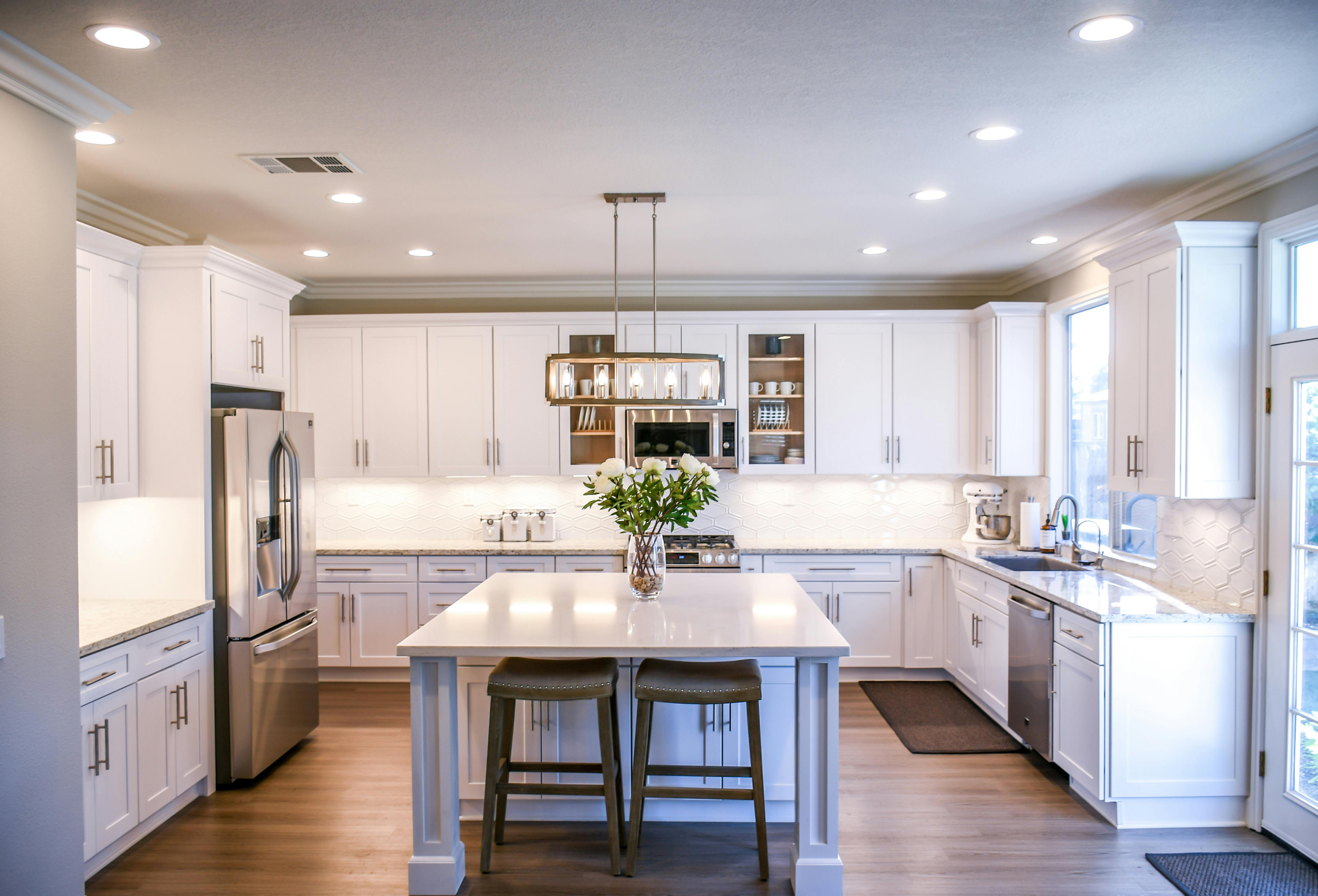When it comes to renovating your kitchen, choosing the right flooring is crucial. The kitchen is a high-traffic area subject to spills, stains, and heavy footfall. For homeowners, interior design enthusiasts, and DIYers, finding the perfect balance between aesthetics, durability, and comfort can be challenging. In this blog, we’ll explore stone, tile, and hardwood flooring options, providing insights that will help you make an informed decision.
Stone Flooring
Durability and Resistance
One of the standout features of stone flooring is its robustness. Natural stones like granite, marble, and slate can withstand high traffic and resist scratches and moisture effectively. This makes it an excellent choice for kitchens, where spills and heavy use are common.
Maintenance
Stone floors do require some upkeep. They need to be sealed regularly to protect against stains and moisture. However, their longevity offsets this effort, as stone can last a lifetime when properly maintained.
Aesthetic Appeal
Stone flooring adds a timeless, elegant touch to any kitchen. Available in a variety of colours and textures, stone can complement both modern and traditional design schemes. Its natural beauty adds character to the space, making it a focal point of the home.
Comfort and Safety
While stone is durable, it can be hard underfoot and potentially slippery when wet. To mitigate this, choose stones with a textured finish or use rugs in high-traffic areas. This adds a layer of comfort and reduces the risk of slips.
Tile Flooring
Durability and Resistance
Tile flooring is another popular choice for kitchens due to its durability and resistance to moisture and stains. Ceramic and porcelain tiles are particularly robust, making them ideal for high-traffic areas.
Maintenance
Tiles are relatively easy to clean. Regular sweeping and occasional mopping keep them looking new. Grout lines may need periodic sealing to prevent stains, but overall, tiles require minimal upkeep. When choosing the best flooring for kitchen, consider durability, moisture resistance, comfort, and ease of maintenance.
Aesthetic Appeal
Tiles offer a wide range of design possibilities. From sleek, modern finishes to rustic, traditional looks, tiles come in various colours, patterns, and sizes. This versatility allows homeowners to create a kitchen floor that perfectly matches their style.
Comfort and Safety
Tiles can be hard and cold underfoot. However, using underfloor heating can make them more comfortable, especially in colder climates. Additionally, choosing tiles with a non-slip surface can enhance safety in the kitchen.
Hardwood Flooring
Durability and Resistance
Hardwood flooring brings warmth and beauty to a kitchen but is not as resistant to moisture and scratches as stone or tile. However, engineered hardwood, which combines a hardwood veneer with plywood, offers better moisture resistance than solid wood.
Maintenance
Maintaining hardwood floors requires some effort. They need to be swept regularly to remove dirt and grit that can scratch the surface. Occasional refinishing can restore their shine and extend their lifespan.
Aesthetic Appeal
The natural beauty of hardwood adds an inviting, warm atmosphere to any kitchen. Available in various wood types and finishes, hardwood can complement a wide range of interior styles, from rustic to contemporary.
Comfort and Safety
Hardwood is softer and warmer underfoot compared to stone or tile, making it more comfortable for long periods of standing. However, it can be slippery when polished, so opting for a matte finish or using rugs can improve safety.
Conclusion
Choosing the best flooring for your kitchen involves balancing durability, maintenance, aesthetics, comfort, and budget. Stone, tile, and hardwood each offer unique benefits and challenges. By considering your specific needs and the characteristics of each material, you can select flooring that not only enhances the beauty of your kitchen but also stands up to the demands of daily life.
